Themed collection 1D/2D materials for energy, medicine, and devices

Introduction to 1D/2D materials for energy, medicine and devices
Guest editors Yu Chen, Gemma-Louise Davies, Anders Hagfeldt and Nicholas Kotov introduce this cross-journal themed collection on 1D/2D materials for energy, medicine and devices.

J. Mater. Chem. A, 2023,11, 17891-17891
https://doi.org/10.1039/D3TA90157B
2D transition metal-based phospho-chalcogenides and their applications in photocatalytic and electrocatalytic hydrogen evolution reactions
Band gap tunability and good electronic conductivity makes 2D MPX3 systems as potential candidates for photocatalytic and electrocatalytic HER. The generation of heterojunction between 2D MPX3 with other HER active materials further enhances the MPX3 activity and stability.

J. Mater. Chem. A, 2023,11, 16933-16962
https://doi.org/10.1039/D3TA01629C
Critical role of 1D materials in realizing efficient and stable perovskite solar cells
Illustration of the position and functions of 1D materials in PSCs.

J. Mater. Chem. A, 2023,11, 18592-18604
https://doi.org/10.1039/D3TA03174H
Recent progress in functional two-dimensional photovoltaic photodetectors and related emerging applications
The photovoltaic effect can directly harvest solar energy by converting optical signals into current without external bias, and thus is a practical and sustainable approach for low-power, high-linearity, and gate-switchable optoelectronic devices.

J. Mater. Chem. A, 2023,11, 11548-11571
https://doi.org/10.1039/D3TA00950E
Recent developments in carbon dots: a biomedical application perspective
Recently, newly developed carbon-based nanomaterials known as carbon dots (CDs) have generated significant interest in nanomedicine.

J. Mater. Chem. B, 2023,11, 3038-3053
https://doi.org/10.1039/D2TB02794A
One-dimensional III-nitrides: towards ultrahigh efficiency, ultrahigh stability artificial photosynthesis
This review describes the recent developments of one-dimensional III-nitride semiconductors and the design strategies for efficient and stable artificial photosynthesis of water splitting and carbon dioxide reduction.
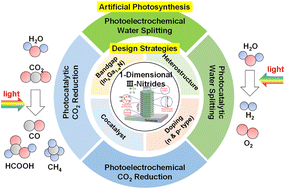
J. Mater. Chem. A, 2023,11, 5427-5459
https://doi.org/10.1039/D2TA09967E
Unifying CO2-to-fuel and biomass valorization over a metal-free 2D carbon nitride-fullerene heterostructure: a solar-driven chemical circular economy
Metal-free biomass alcohol oxidation in synergy with CO fuel production.

J. Mater. Chem. A, 2023,11, 18672-18678
https://doi.org/10.1039/D3TA04455F
Dual metal site-mediated efficient C–N coupling toward electrochemical urea synthesis
The dual metal sites of Co and Mo in a CoPc–MoS2 system mediate CO2 and N2 activation and result in a C–N coupling reaction to produce urea via an electrocatalytic pathway.

J. Mater. Chem. A, 2023,11, 13249-13254
https://doi.org/10.1039/D3TA01011B
Direct 129Xe-NMR spectroscopy evidence of a mesogenic dendrimer with free void space
A mesogenic dendrimer with three-fold symmetry was determined, using 129 Xe-NMR spectroscopy, to contain free void space in the columnar or solid state.

J. Mater. Chem. C, 2023,11, 3710-3714
https://doi.org/10.1039/D3TC00486D
Degradation of phenolic compounds in wastewater using a conical-shaped packed-bed microbial fuel cell in continuous flow with recycling
A packed-bed SCMFC is used to demonstrate the positive effects of recycling in continuous mode on the degradation of a phenolic compound in wastewater.

J. Mater. Chem. A, 2023,11, 3942-3948
https://doi.org/10.1039/D2TA08667K
Conjugated microporous polymer frameworks for sustainable energy materials – elucidating the influence of solvents on the porosity properties for future design principles
Here, we use atomic simulations to rationalise why using high polarity solvents to synthesise conjugated microporous polymers gives a high ratio of micro- to mesoporosity, and using low polarity solvents gives a lower ratio of micro- to mesoporosity.

J. Mater. Chem. A, 2024,12, 4159-4168
https://doi.org/10.1039/D3TA04866G
Adsorption of immunomodulatory proteins over silica nanoparticles and the in vitro effect
Silica NPs (SiNPs) used as a platform to deliver molecules have huge potential for biomedical applications.

Mater. Adv., 2024,5, 777-787
https://doi.org/10.1039/D3MA00776F
A para-azaquinodimethane integrated quinoidal conjugated microporous polymer
Quinoidal compounds own unique properties that make them a promising platform for optoelectronic applications.

J. Mater. Chem. C, 2024,12, 110-117
https://doi.org/10.1039/D3TC02233A
Molecular metal oxide cluster-soldered interpenetrating polymer network “hosts” carbon nanotube “guest” for green millimeter wave absorption
Copper-based Keggin-type polyoxometalate-soldered IPN-CNT construct has been designed through host–guest electrostatic assembly between counter-charged CNTs and Cu-POM-soldered charge-triggered IPN for enhanced millimeter wave absorption in X-band.

J. Mater. Chem. C, 2023,11, 14725-14745
https://doi.org/10.1039/D3TC01754K
Ultralarge suspended and perforated graphene membranes for cell culture applications
This paper presents the successful development of ultrathin (atomic thickness), large-scale (up to millimeter size) and microporous suspended graphene and verifies its promising potential as membrane for cell culture models.
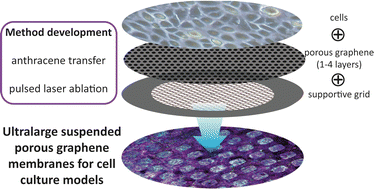
J. Mater. Chem. B, 2023,11, 10097-10107
https://doi.org/10.1039/D3TB01784B
Structural organic battery cathodes comprised of organic redox active polymers, reduced graphene oxide, and aramid nanofibers
A fast-charging structural cathode comprised of a redox-active polymer PTMA–GMA coated on a rGO/BANF platform that exhibits an excellent specific power (∼4310 W kg−1 at 25C-rate) and specific modulus (∼4.33 GPa cm3 g−1).

Mater. Adv., 2023,4, 4886-4896
https://doi.org/10.1039/D3MA00519D
Enhanced hydrogen evolution reaction via photoelectrochemical water splitting utilizing asymmetric MoSSe under a low external magnetic field
The co-existence of superior photocatalytic properties and strong spin–orbit-coupling in two-dimensional polar MoSSe plays a benign role in external magnetic field enhanced photoelectrochemical hydrogen evolution reaction.

J. Mater. Chem. A, 2023,11, 21135-21145
https://doi.org/10.1039/D3TA03227B
Exfoliated NbSe2 nanosheet@polypyrrole hybrid nanocomposites as a high performance anode of lithium-ion batteries
Transition metal dichalcogenides (TMDCs), as next-generation two-dimensional materials, have gained considerable attention in energy storage applications through the incorporation of functional materials.

J. Mater. Chem. A, 2023,11, 19083-19090
https://doi.org/10.1039/D3TA01335A
Pt single atoms dispersed in a hybrid MOFox-in-nanotube structure for efficient and long-term stable photocatalytic H2 generation
Hierarchical structures produced by thermal conversion of MOFs within the anodic TiO2 nanotube layers combine the excellent light harvesting, carrier transport, and Pt SA anchoring to achieve a remarkable photocatalytic H2 evolution performance.

J. Mater. Chem. A, 2023,11, 17759-17768
https://doi.org/10.1039/D3TA00996C
Boron-rich enhanced ambient CO2 capture and storage of boron–carbon–nitride hybrid nanotubes
Increasing carbon dioxide (CO2) emissions as the most challenging greenhouse gas is considered as a major cause of global warming and ocean acidification.
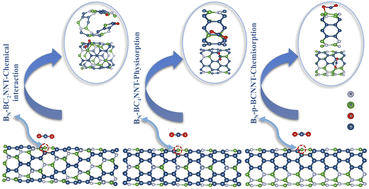
J. Mater. Chem. A, 2023,11, 17594-17608
https://doi.org/10.1039/D3TA01800H
Unique Pd/PdO–In2O3 heterostructures for the highly efficient detection of triethylamine
Rational design of Pd/PdO–In2O3 heterojunction effectively enhanced the comprehensive triethylamine sensing performance.
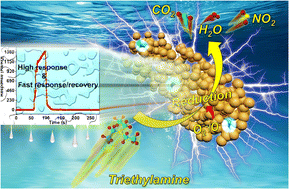
J. Mater. Chem. A, 2023,11, 17056-17065
https://doi.org/10.1039/D3TA02405A
Elucidating the oxygen reduction reaction kinetics on defect engineered nanocarbon electrocatalyst: interplay between the N-dopant and defect sites
For oxygen reduction reaction (ORR), the active sites of a defective N-doped graphene are predicted by a quantum mechanics/machine learning approach; the synthesized catalyst shows exemplary ORR activity that was further confirmed by a DFT study.

J. Mater. Chem. A, 2023,11, 17045-17055
https://doi.org/10.1039/D3TA00871A
The structural transformation of metal–organic frameworks towards 2D carbon for a desirable supercapacitor
2D carbon materials with porous structures based on Zn-BTC obtained by a convenient interfacial synthesis were reported. The as-constructed supercapacitors achieved a specific capacitance of 62.5 F g−1 and cycling stability (30 000 cycles).

J. Mater. Chem. C, 2023,11, 10502-10508
https://doi.org/10.1039/D3TC01861J
3D printed inks of two-dimensional semimetallic MoS2/TiS2 nanosheets for conductive-additive-free symmetric supercapacitors
3D printed electrodes of 1T′/1T MoS2/TiS2 nanosheets without conductive additives have been demonstrated to perform for durable supercapacitors.

J. Mater. Chem. A, 2023,11, 16190-16200
https://doi.org/10.1039/D3TA02508J
Electronic transport and polarization-dependent photoresponse in few-layered hafnium trisulfide (HfS3) nanoribbons
Few-layered HfS3 nanoribbons exhibit n-type conductivity and a large photoresponse to visible light. The photocurrent strongly depends on the polarization direction of the excitation laser due to the highly anisotropic quasi-1D crystal structure of HfS3.

J. Mater. Chem. C, 2023,11, 9425-9437
https://doi.org/10.1039/D3TC00773A
Exploiting the interaction between halloysite and charged PNAs for their controlled release
The interaction of PNA molecules with halloysite is a useful strategy to obtain innovative systems to be applied in nanomedicine.

J. Mater. Chem. B, 2023,11, 6685-6696
https://doi.org/10.1039/D3TB00637A
Nanozyme-based guanidinium peptides mediate surface reactive oxygen species for multidrug resistant bacterial infection management
Nanozymes are effective novel antibacterial agents.

J. Mater. Chem. B, 2023,11, 6393-6403
https://doi.org/10.1039/D3TB01104F
A computational study of the influence of nanoparticle shape on clathrin-mediated endocytosis
Clathrin-mediated endocytosis is shape sensitive for nanoparticles.

J. Mater. Chem. B, 2023,11, 6319-6334
https://doi.org/10.1039/D3TB00322A
Cu-modified electrolyte-gated transistors based on reduced graphene oxide
Electrodeposition of Cu coatings onto the gates of electrolyte-gated transistors based on reduced graphene oxide leads to efficient devices featuring a sensitivity equal to 1–3 mV and able to track emulated action potentials (frequency 0.1 Hz).

J. Mater. Chem. C, 2023,11, 8876-8884
https://doi.org/10.1039/D3TC00596H
Nitrogen-doped graphene quantum dot-based portable fluorescent sensors for the sensitive detection of Fe3+ and ATP with logic gate operation
A unique fluorescent biosensor based on N-doped graphene quantum dots has been developed with high selectivity, anti-interference properties, excellent biocompatibility and portability, which can sensitively determine Fe3+ and ATP levels in biological matrices.

J. Mater. Chem. B, 2023,11, 6082-6094
https://doi.org/10.1039/D3TB00327B
Long-term cycling stability of a SnS2-based covalent organic nanosheet anode for lithium-ion batteries
A CON are hybridized with layered SnS2 to improve electrical conductivity and structural stability of SnS2 for lithium ion battery systems. Therefore, the hybrid shows outstanding performances over 5600 charge/discharge cycles.
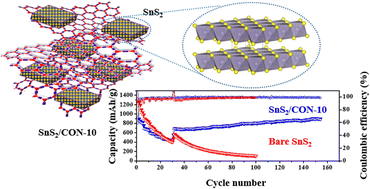
J. Mater. Chem. A, 2023,11, 13320-13330
https://doi.org/10.1039/D3TA01537H
Layered double hydroxide/boron nitride nanocomposite membranes for efficient separation and photodegradation of water-soluble dyes
New CuAl–CO3 LDH/BNOx nanocomposite membranes demonstrate excellent dye retention characteristics and superior flow rates, as well as efficient photocatalysis for applications in membrane anti-fouling.

J. Mater. Chem. A, 2023,11, 12266-12281
https://doi.org/10.1039/D3TA01581E
[W10O32]4−-based POMOFs with different nuclear cobalt clusters for photoreduction of CO2 to produce syngas
A POMOF with [W10O32]4− and mononuclear cobalt clusters as connecting nodes, which can be used as a photocatalyst to reduce low concentrations of CO2 in flue gas to generate syngas.
![Graphical abstract: [W10O32]4−-based POMOFs with different nuclear cobalt clusters for photoreduction of CO2 to produce syngas](/en/Image/Get?imageInfo.ImageType=GA&imageInfo.ImageIdentifier.ManuscriptID=D3TC00775H&imageInfo.ImageIdentifier.Year=2023)
J. Mater. Chem. C, 2023,11, 7389-7396
https://doi.org/10.1039/D3TC00775H
Electrokinetic transport properties of deoxynucleotide monophosphates (dNMPs) through α-phase phosphorene carbide nanochannel for electrophoretic detection
Through molecular dynamics simulations, we report that the nanochannel formed by α-PC nanostructure shows high potential for electrokinetic identification of biomolecules.

J. Mater. Chem. B, 2023,11, 4914-4921
https://doi.org/10.1039/D3TB00460K
Prediction of structurally stable two-dimensional AuClO2 with high thermoelectric performance
A new monolayer semiconductor AuClO2 has been predicted and the results demonstrate that AuClO2 features an ultralow lattice thermal conductivity and a high figure of merit zT, supporting its potential application as a 2D thermoelectric material.

J. Mater. Chem. A, 2023,11, 11903-11908
https://doi.org/10.1039/D3TA01037F
Electrolyte-mediated assembly of graphene-based supercapacitors using adsorbed ionic liquid/non-ionic surfactant complexes
Electrolyte mediated assembly of graphene based supercapacitor using adsorbed IL/non ionic surfactant.

J. Mater. Chem. A, 2023,11, 11222-11234
https://doi.org/10.1039/D3TA00959A
Favorable morphology and compositional distribution enable efficient and stable quasi-2D Dion–Jacobson perovskite solar cells
New small molecules MDAN and EDAN are synthesized and found to be different in tuning the morphology of low-dimensional perovskite morphology.

J. Mater. Chem. A, 2023,11, 11377-11387
https://doi.org/10.1039/D2TA09940C
A conformal van der Waals graphene coating enabled high-performance piezo-ionic sensor for spatial, gesture, and object recognition
Highly electrically conductive (16 ohm sq−1) and conformal van der Waals graphene electrodes were synthesized on piezo-ionic materials. Such electrodes enhanced the piezo-ionic output to 90.3 mV and distinguished soft and hard objects.

J. Mater. Chem. A, 2023,11, 11288-11297
https://doi.org/10.1039/D3TA00215B
Confinement of MACl guest in 2D ZIF-8 triggers interface and bulk passivation for efficient and UV-stable perovskite solar cells
The MACl@ZIF-8 interlayer plays a bi-functional role in passivating buried interfaces and healing the defects in the bulk phase. As a result, significantly enhanced device performance is obtained with a champion PCE of 22.10%.

J. Mater. Chem. C, 2023,11, 6730-6740
https://doi.org/10.1039/D3TC00609C
Water-induced dimensionality conversion from 3D perovskites to microwires and 2D hybrid halide perovskites
Morphological and structural conversion from the 3D MAPbBr3 microcube perovskite to microwires and 2D Ruddsdlen–Popper layered structures through a water-assisted recrystallization process.

J. Mater. Chem. C, 2023,11, 6651-6661
https://doi.org/10.1039/D3TC00593C
Structural modulation of low-valent iron in LDH-derived Ni3Se4 nanosheets: a breakthrough electrocatalyst for the overall water splitting reaction
Here an LDH-derived microporous Fe@Ni3Se4 with enriched redox active Fe2+ ion is reported. The same has acquired 10 mA cm−2 current density with 185 and 33 mV of overpotential value in alkaline condition with high specific activity and durability.

J. Mater. Chem. A, 2023,11, 10684-10698
https://doi.org/10.1039/D3TA00868A
In situ FTIR study of 2D-carbon materials for CO2 splitting under non-thermal plasma environment – selective CO production
Carbon dioxide conversion has been considered a promising solution to global warming and as a source of CO.

J. Mater. Chem. A, 2023,11, 10677-10683
https://doi.org/10.1039/D3TA00953J
Holistic functional biomimetics: a key to make an efficient electrocatalyst for water oxidation
The performance of a water-oxidation electrocatalyst is determined by the synergistic effect of an active site structure, e− transfer system, and H+ transport system. The holistic functional biomimetic is a promising design strategy.

J. Mater. Chem. A, 2023,11, 10669-10676
https://doi.org/10.1039/D3TA01040F
A high-performance “fueled” photodetector based on few-layered 2D ternary chalcogenide NiGa2S4
The activity of “fueled” NiGa2S4/ITO photodetector is described. The presence of ethanol boosts the performances of the photodetector increasing its responsivity and spectral response.

J. Mater. Chem. C, 2023,11, 6317-6326
https://doi.org/10.1039/D3TC00508A
Molecular interaction modulating Ruddlesden–Popper tin-based perovskite crystallization
An effective method slows down crystallization kinetics via regulating the competition between intra- and intermolecular interactions in Ruddlesden–Popper tin-based perovskites.

J. Mater. Chem. A, 2023,11, 10319-10327
https://doi.org/10.1039/D3TA00873H
An ultrathin 2D NiCo-LDH nanosheet decorated NH2-UiO-66 MOF-nanocomposite with exceptional chemical stability for electrocatalytic water splitting
Utilization of bifunctional high-efficiency non-precious electrocatalysts for stable and effective water splitting is crucial to the growth of the clean energy industry.

J. Mater. Chem. A, 2023,11, 10309-10318
https://doi.org/10.1039/D3TA00836C
Structural control of charge transport in polymer monolayer transistors by a thermodynamically assisted dip-coating strategy
A thermodynamically assisted strategy is developed to precisely control the growth rate of polymer aggregates in solution. The resulting polymer monolayer exhibits improved molecular order and doubled mobility in field-effect transistors.

J. Mater. Chem. C, 2023,11, 6026-6033
https://doi.org/10.1039/D3TC00562C
Tuning the 1D–2D dimensionality upon ligand exchange in silver thiolate coordination polymers with photoemission switching
Thiol-ligand exchange to form either 1D luminescent or 2D non-emissive Ag(I)-based coordination polymers.

J. Mater. Chem. B, 2023,11, 3979-3984
https://doi.org/10.1039/D3TB00537B
Biomass-derived two-dimensional N,O-doped carbon with embedded binary-metal nanoparticles enables dendrite-free potassium-metal anodes
The NiCo@NOGC matrix with rich nitrogen and oxygen functional groups can effectively inhibit dendrite growth and serve as an excellent host for the K metal anode.

J. Mater. Chem. A, 2023,11, 9829-9839
https://doi.org/10.1039/D3TA00904A
Overall water electrolysis on a graphdiyne-iron oxyhydroxide heterostructure
The incomplete charge transfer between graphdiyne and metal atoms at the interface structures endows the catalyst with excellent catalytic activity.

J. Mater. Chem. A, 2023,11, 9824-9828
https://doi.org/10.1039/D3TA01176C
Impact of organic–inorganic wavefunction delocalization on the electronic and optical properties of one-dimensional hybrid perovskites
This work investigates the impact of electronic couplings between the organic and inorganic components of one-dimensional hybrid perovskites on their ground-state and excited-state electronic properties and optical properties.
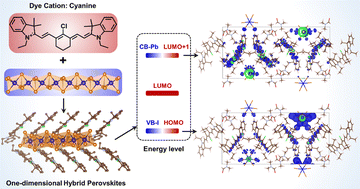
J. Mater. Chem. C, 2023,11, 5714-5724
https://doi.org/10.1039/D3TC00469D
Constructing Ni–Co PBA derived 3D/1D/2D NiO/NiCo2O4/NiMn-LDH hierarchical heterostructures for ultrahigh rate capability in hybrid supercapacitors
Engineering hierarchical heterostructure materials has been recognised as a challenging but prepossessing strategy for developing hybrid supercapacitors.

J. Mater. Chem. A, 2023,11, 9546-9554
https://doi.org/10.1039/D3TA00759F
Defect-enrichment in porous interface of ultrathin CuO nanobelts realizes a novel CO2 photoreduction pathway
Defect-enrichment in porous interface of ultrathin CuO nanobelts has been demonstrated in optimizing the formation energy of *CHO intermediates, thus customizing the unique reaction pathway of CO2 photoreduction to the desired CH3OH products.

J. Mater. Chem. A, 2023,11, 8776-8782
https://doi.org/10.1039/D3TA00824J
Capillary-induced self-crumpled and sulfur-deficient MoS2 nanosheets inhibit polysulfide cycling in lithium–sulfur batteries
Unique c-MoS2 nanosheets with corrugated edges mitigate the suppression of LiPSs and assist to reutilize them to boost the electrochemical kinetics in the Li–S battery.

J. Mater. Chem. A, 2023,11, 8265-8276
https://doi.org/10.1039/D3TA00411B
Alloying promotion of Pd-based metallenes in electrocatalytic hydrogenation of functionalized nitroarenes
Pd–M (M = Cr, Mo, and W) metallenes are for the first time introduced as efficient electrocatalysts for the ECH of nitroarenes, in which the alloying promotion can be intrinsically ascribed to the boosted chemisorption/activation of a nitro group.

J. Mater. Chem. A, 2023,11, 7505-7512
https://doi.org/10.1039/D2TA10021E
An Ag–Au-PANI core–shell nanowire network for visible-to-infrared data encryption and supercapacitor applications
An Ag–Au-PANI core–shell network is fabricated for dual functions of visible-to-infrared electrochromic supercapacitor and data encryptable display.

J. Mater. Chem. A, 2023,11, 7264-7275
https://doi.org/10.1039/D3TA00426K
Computing metasurface capable of broad-band switchable anisotropic edge-enhanced imaging
We reported a novel all-optical imaging device based on a designed 2D material (metasurface) for anisotropic 2D edge enhancements. This metasurface can work as a switchable anisotropic edge filter at broadband wavelengths.
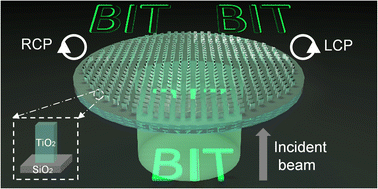
J. Mater. Chem. C, 2023,11, 3956-3963
https://doi.org/10.1039/D3TC00092C
Hierarchical flower-like MoS2/reduced graphene oxide nanohybrids supported on nickel foam as a high-performance electrode material for supercapacitor applications
Flower-like MoS2/rGO nanohybrids have been synthesized using one-pot hydrothermal reaction method. The supercapacitor cell exhibited excellent electrochemical performance predominated by surface capacitive processes.

J. Mater. Chem. A, 2023,11, 5910-5924
https://doi.org/10.1039/D2TA08416C
Light induced diversity-oriented synthesis (DOS) library of annulated indolizine fluorophores for imaging non-lysosomal lipid droplets (LDs)
DASS fluor (a novel annulated indolizines based fluorescent probe): their synthesis via DOS and biological evaluation for non-lysosomal LD detection.

J. Mater. Chem. B, 2023,11, 2191-2199
https://doi.org/10.1039/D2TB02656B
Green synthesis of ultrathin 2D nanoplatelets, hematene and magnetene, from mineral ores in water, with strong optical limiting performance
Hematene and magnetene nanoplatelets have been produced by liquid phase exfoliation of natural mineral ores, in a water solution of melamine under mild sonication.

J. Mater. Chem. C, 2023,11, 3244-3251
https://doi.org/10.1039/D2TC04524A
Assembling a high-performance asymmetric supercapacitor based on pseudocapacitive S-doped VSe2/CNT hybrid and 2D borocarbonitride nanosheets
High performance asymmetric supercapacitor assembled using the S-VSe2/CNT positrode and BCN negatrode.
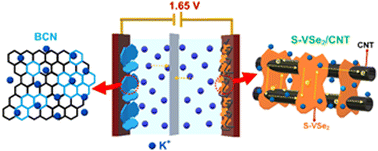
J. Mater. Chem. C, 2023,11, 2565-2573
https://doi.org/10.1039/D2TC04600H
Rational design of a flexible inorganic composite membrane with an interconnected porous structure as a high-performance lithium ion capacitor electrode
The synergistic effect of multiple components (Cu, Cu2O and CuO) in CuxONWs and the high bonding strength between the three materials in a CGA membrane anode markedly improve the capacitance and cycling performance of lithium-ion capacitors.

J. Mater. Chem. C, 2023,11, 2345-2354
https://doi.org/10.1039/D2TC04482J
Few-layer MoS2 nanosheets with and without silicon nanoparticles as anodes for lithium-ion batteries
NaCl crystals are employed as a substrate to grow MoS2 nanosheets. On dissolving NaCl, the nanosheets are introduced to silicon nanoparticles using layer-by-layer assembly forming robust MoS2@Si anodes for lithium-ion batteries.
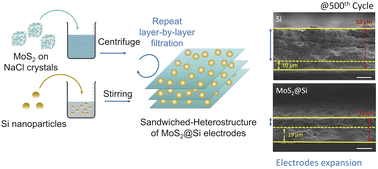
J. Mater. Chem. A, 2023,11, 2670-2678
https://doi.org/10.1039/D2TA08886J
Improving the intrinsic conductivity of δ-MnO2 by indium doping for high-performance neutral aqueous sodium-ion supercapacitors with commercial-level mass-loading
Indium is introduced to δ-MnO2 for the first time. The conductivity of δ-MnO2 can be doubled and a high specific capacity can be achieved at a commercial-level mass loading.
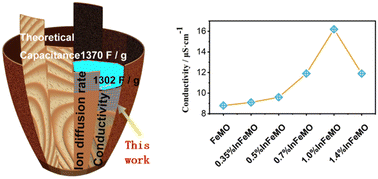
J. Mater. Chem. A, 2023,11, 2133-2144
https://doi.org/10.1039/D2TA08638G
Structural engineering of metal–organic layers toward stable Li–CO2 batteries
A flower-like metal–organic layer with a rich catalytic surface and unique conductive structure was fabricated as an efficient cathodic catalyst for Li–CO2 batteries. The as-developed cells display remarkable cycling stability.

J. Mater. Chem. A, 2023,11, 1180-1187
https://doi.org/10.1039/D2TA08598D
About this collection
We are delighted to introduce this themed collection titled: ‘1D/2D materials for energy, medicine and devices’ across Journal of Materials Chemistry A, Journal of Materials Chemistry B and Journal of Materials Chemistry C. The Guest Editors for this collection are Professor Yu Chen (Shanghai University, China),Dr Gemma-Louise Davies (University College London, UK),Professor Anders Hagfeldt (Uppsala University, Sweden), andProfessor Nicholas Kotov (University of Michigan, USA).
One- and two-dimensional materials have become extremely popular in recent years, thanks in part to the unique and fascinating properties of materials such as carbon nanotubes and graphene. Understanding and investigating the chemical, shape and structure-dependent properties of such materials has led to an explosion in research seeking to exploit these species in the fields of energy, medicine, and devices.